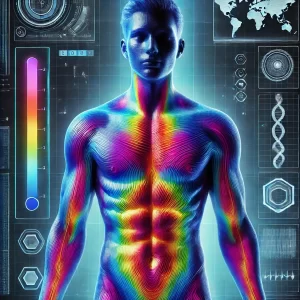How Does Medical Thermography Work?

Medical thermography is a non-invasive, radiation-free imaging technology designed to detect temperature variations on the skin, offering valuable insights into physiological function and health status. Unlike traditional imaging techniques, which primarily focus on structural changes, medical thermography captures functional changes in real time by identifying subtle heat patterns that may indicate underlying health concerns.
By analyzing circulation, inflammation, and metabolic changes, medical thermography provides a comprehensive assessment of the body’s regulatory processes. For instance, areas of elevated temperature can signal increased vascular activity, inflammation, or abnormal tissue growth, while cooler areas may indicate circulatory dysfunction or nerve-related disorders. These findings allow healthcare providers to detect early physiological abnormalities that could go unnoticed with other diagnostic tools.
Medical thermography has become an essential tool for preventive health monitoring, as it enables early detection of physiological irregularities before symptoms develop. This makes it particularly useful for monitoring breast health, neuromuscular function, vascular conditions, and chronic pain syndromes. Additionally, since it is completely safe, painless, and free from radiation exposure, individuals can undergo frequent screenings without any risk, making it an ideal solution for long-term health monitoring and proactive wellness care.
As advancements in infrared imaging technology continue to improve accuracy and resolution, medical thermography is increasingly being recognized as a valuable resource in functional medicine, integrative healthcare, and disease prevention strategies. Its ability to assess real-time physiological responses makes it an indispensable diagnostic and screening tool for both healthcare professionals and individuals seeking to take a proactive approach to their health.
